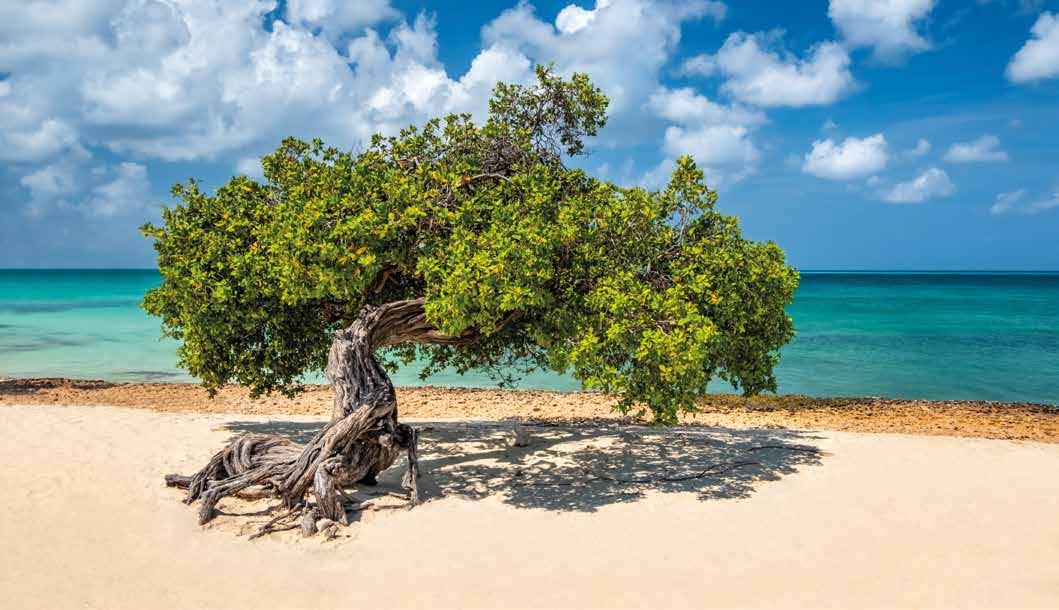

















Espiritu Santo’s Champagne Beach is the most famous beach in Vanuatu; with soft white sand fringed by lush foliage, it’s a scenic spot that’s particularly popular with cruise ship guests visiting the island. Its name is derived from a unique phenomenon where volcanic gas bubbles rise to the surface of the sea during low tide, the effervescence tickling the toes of anyone wading through or snorkeling in the turquoise water. While it might not be the most secluded beach in Vanuatu, it sure is a pretty one.




Zlatni Rat, also known as the Golden Horn or the Golden Cape, is one of Croatia’s most famous—and certainly most photogenic—beaches. Its name alludes to why: the V-shaped spit of golden sand juts off the end of the island of Brač, its shape constantly shifting with the wind and tides. The beach is a hotspot for windsurfing, thanks to those winds that shape it, but is also favored by those looking to sunbathe or simply have an afternoon picnic. Surrounded by a lush pine grove, the area offers plenty of shade and scenic walking paths, while the nearby town of Bol provides easy access to restaurants, cafés, and historical sites.


Ipanema in Rio de Janeiro is another world-famous beach, located right next to Copacabana, and it, too, is known for its vibrant atmosphere. (Sunbathing! Beach volleyball! Surfing!) That said, it has a bit more of a chic, upscale atmosphere than its neighbor. Just at the edge of its golden sands is quite the social scene, with numerous bars, cafés, and restaurants lining the streets. The beach is divided into sections, each catering to different crowds, from families to surfers to the LGBTQ+ community, so you can choose which suits you best. While you’ll find people here all day long, sunset draws perhaps the biggest crowds to Ipanema, as the views are magnificent.
Aruba’s Eagle Beach is the country’s widest, boasting plenty of soft white sand to accommodate many visitors without feeling too crowded. It has two signature draws. First, there’s a highly photographed pair of fofoti trees on the beach; their gnarled trunks make them particularly sculptural. And second, this is a sea turtle nesting hotspot. Of course, both the trees and the turtles are protected by law, but you can still take pictures of them. There are a handful of low-rise hotels behind the beach; for resorts, head just south to Manchebo Beach, which is the westernmost point in Aruba, as well as Divi Beach.


Dry Tortugas National Park in the Florida Keys is one of the lesser-visited national parks of the United States, but for those willing to make the journey, a pretty special experience awaits. The park is located 70 miles west of Key West, and it’s accessible only by boat or seaplane. And most of it is underwater—there are just seven small islands in the 100-square-mile park. While the most famous landside attraction is Fort Jefferson, the largest brick masonry structure in the Americas, there are also beaches here. And beyond the beaches, fantastic snorkeling awaits.

Florida Keys, Florida UNITED STATES OF AMERICA



TEXT
Stefanie Waldek
Han van de Ven
EDITING
Léa Teuscher
Sign up for our newsletter with news about new and forthcoming publications on art, interior design, food and travel, photography and fashion as well as exclusive offers and events. If you have any questions or comments about the material in this book, please do not hesitate to contact our editorial team: art@lannoo.com.
© Lannoo Publishers, Belgium, 2025 D/2024/45/189 - NUR 450/500
ISBN: 978 94 014 9895 1
www.lannoo.com
All rights reserved. No part of this publication may be reproduced or transmitted in any form or by any means, electronic or mechanical, including photography, recording or any other information storage and retrieval system, without prior permission in writing from the publisher.
Every effort has been made to trace copyright holders. If, however, you feel that you have inadvertently been overlooked, please contact the publishers.